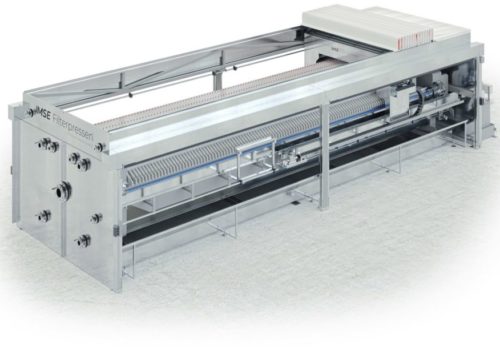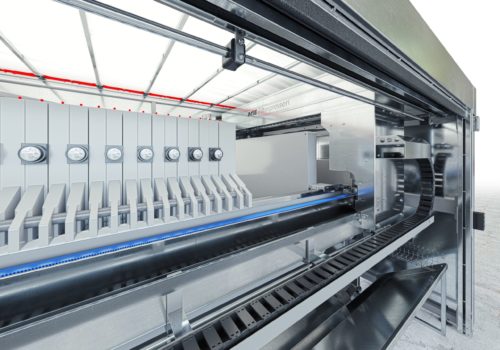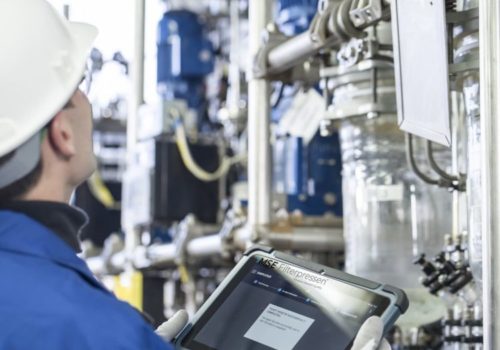Filtrations of various kinds result in filter cakes not being able to form completely in the turbidity channel (in the inlet area of the filter plates). While in other applications, e.g. fully automatic filter presses, a fixed filter cake in the turbidity channel is not desired. If, after filtration, a liquid suspension remains in the turbidity channel without core blowing, it leaks out when the plate package is opened, causing serious problems. Dirty filter cloths or deposits on the lower edge of the filter plates are only a few of the undesirable effects. This results in poor filtration results and high mechanical loads for the filter press.
FUNCTIONALITY CORE BLOWING
Compressed air is blown into the turbidity channel via a valve mounted on the movable pressure plate of the filter press before the filter chambers are opened. Compressed air flows through the pressure plate towards the head plate. Via a return line, the suspension-air mixture in the turbidity channel is returned to the storage tank and discharged. The compressed air requirement depends on the respective process and the size of the filter press. The decisive volume of the turbidity channel is between approx. 2L and approx. 200L.
Factors that influence how effective this process are:
-
- Diameter of the suspension channel
-
- Length of filter press equipment
-
- Suspension viscosity
-
- Available air pressure
-
- Blow-out time





